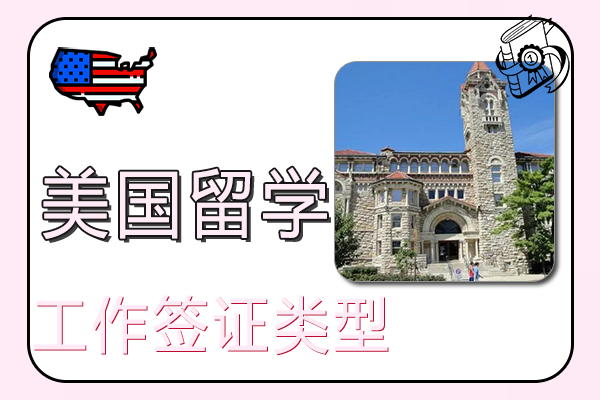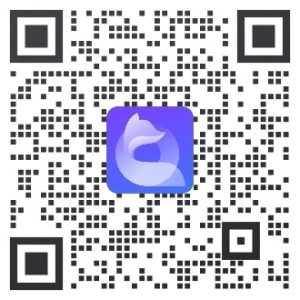How to apply for a work visa after graduating from studying in the United States is a problem for most students who want to stay in the United States to develop after graduation. The H-1B visa is an important work visa to solve this problem. Although the application is not easy, not only do you have to work hard, but you also have to rely on luck. After passing the screening, the lottery will decide whether to stay or not. Even though the winning rate of the US work visa has repeatedly hit a new low, most US international students are still confident that they can stay in the United States to work. The following is about2022 Study Abroad in the United States Work Visa Types and Application RequirementsWhat documents are required for a U.S. student visa、2023 study visa、U.S. Student Visa Rejection and Re-Approval, ,U.S. High School Student Visa Application, ,How much does a U.S. student visa cost?The problem.

2022 Types of U.S. Work Visas for Study Abroad and Application Requirements
Types of work visas for studying in the United States and application requirements
1. Types of work visas for studying in the United States
1. U.S. work visa H-1B (professionals)
If an international student in the United States wishes to work in a pre-arranged professional or technical job in the United States, he or she should apply for an H-1B visa. S study abroad experts pointed out that this type of visa requires the applicant to have a bachelor's degree or above (or equivalent) in the professional field in which the applicant is to work. USCIS will review and determine whether the job the applicant will be employed in constitutes a professional skill job and whether the applicant meets the professional skill requirements. The applicant's employer should submit a labor status application form to the U.S. Department of Labor, including the terms of the contract signed between the two parties.
2. US work visa H-2A (seasonal agricultural workers)
When there is a shortage of U.S. workers, U.S. employers can use H-2A visas to recruit foreign nationals to work in the U.S. for short-term agricultural work. If you need to work in the U.S. for a short period of time as a temporary/seasonal agricultural worker, you can apply for an H-2A nonimmigrant visa. The U.S. employer (or an association of U.S. agricultural producers named as a joint employer) who intends to hire the applicant must file Form I-129, Petition for a Nonimmigrant Worker, on behalf of the applicant.
3. U.S. work visa H-2B (technical and unskilled workers)
If you need to work in the United States for temporary/seasonal work, but there is a shortage of local workers in the United States, you should apply for an H-2B visa. The U.S. employer who intends to hire the applicant must obtain a certification from the U.S. Department of Labor to confirm that there are no suitable U.S. citizens who are qualified for the position that the applicant is seeking to work.
4. US work visa H-3 (trainee)
An H-3 visa is required for a person who wishes to come to the United States for training in any field (other than graduate education or training) for up to two years. This training may be paid and allow the applicant to participate in practical work, but may not involve production work, and the premise is that the applicant cannot obtain similar training in his or her home country.
5. U.S. work visa H-4 (family)
If you are the principal applicant holding an H visa, your spouse or unmarried children (under 21 years old) will be issued an H-4 visa to accompany you to the United States, but family members are not allowed to work in the United States.
6. U.S. work visa L-1 (intra-company transferee)
If you are an employee of an international company and are being temporarily assigned to work in a parent company, subsidiary, or affiliate in the United States, you will need to apply for an L-1 visa. The international company here can be a U.S. or foreign company. To obtain an L-1 visa, the applicant must be a managerial/executive level employee or have specialized knowledge and be assigned to such a position in the United States by the company, but the job title does not have to be exactly the same before and after arriving in the United States. In addition, the applicant must have worked continuously for one year in a foreign organization of the international company in the three years before applying to work in the United States. You can only apply for an L-1 visa after the U.S. company or affiliate you intend to work for has received an application approval from USCIS (either in the form of a blanket application for the company or an individual application).
7. U.S. work visa L-2 (family)
If you are the principal applicant with a valid L visa, your spouse or unmarried children (under 21 years old) will be issued an L-2 visa. Under recent legislation, your spouse may also apply for employment authorization. Your spouse must enter the United States on his or her own L-2 visa and then submit a completed Form I-765 (available from USCIS) and pay the applicable application fee. However, the law still prohibits your children from seeking employment in the United States.
8. US Work Visa O
O visas are primarily for individuals who have distinguished themselves in the sciences, arts, education, business, athletics, or motion picture and television production, and their necessary assistants/accompanying personnel.
9. US Work Visa P (Artists, Performers)
P visas are primarily for athletes/entertainers, artists, and their necessary assistants/accompanying personnel who are preparing to perform in the United States.
10. US work visa Q
If you plan to come to the United States to participate in an international cultural exchange program that provides practical training, job opportunities, and sharing of your country's history, culture, and traditions, you should apply for a Q visa. To apply for this type of visa, the program sponsor must submit an application to USCIS on your behalf and it must be approved.
2. Application Requirements for a US Work Visa
This includes the applicant's job requiring professional expertise and the applicant meeting the professional requirements.
1. Professional requirements.
Under immigration law, a profession is a job that can only be performed by a professional with at least a bachelor's degree. A professional position must meet one of the following criteria:
The minimum requirement for this job is a bachelor's degree; the industry generally requires practitioners to have a bachelor's degree, or the job is extremely complex or unique and can only be performed by a professional degree; employers usually require practitioners to have a professional degree; a certain job is very complex and requires a bachelor's degree or above to have enough knowledge to perform the job.
2. Application procedures.
The H-1B application is divided into two steps. First, the applicant's company should submit an application form to the Department of Labor to prove that: the applicant's salary will not be lower than the salary of similar American workers; at the time of the applicant's application, the company has no strike or other activities; the applicant's working conditions are the same as those of similar American workers; the company has notified the union that the applicant's application has been reported to the Department of Labor, and if the company does not have a union, it will announce this matter within the company.
Extension, change of work unit and others.
The initial H-1B approval is valid for three years. When the three-year period expires, you can apply for another three-year extension, for a total of six years. During the period in which you have applied for an extension but have not yet been approved, you can continue to work in H-1 status for 240 days.
Faced with the dismal lottery results, domestic applicants can only find new ways to deal with the situation. Some choose to work in research institutions or non-profit organizations affiliated with schools, because the personnel of these institutions can apply for H-1B work visas without quota restrictions; some choose to switch to a student visa at a school, continue to work through internships provided by the school, and wait for the application in the next fiscal year; and some choose to apply for a business visa and start a busy life between China and the United States.
In order to retain desired employees, some Chinese companies in the United States are also trying various methods. The L1 visa is only applicable to multinational companies and requires applicants to have worked overseas for at least one year. There is also a certain risk of visa rejection.
Further reading: Guide to purchasing medical insurance for students studying in the United States
1. Medical insurance expenses
When choosing a program, you need to confirm the base cost to be paid, as well as understand how and how often to pay, monthly or annually. Generally speaking, the lower the premium, the less the compensation will be afterwards, but how much is not the most important thing, you need to confirm that the program can protect you effectively.
2. Company Reputation
Although it is a non-permanent insurance policy that generally expires after you graduate and leave the country, you should pay extra attention to the qualifications and reputation of the company that provides the service, and choose a larger company, so that the subsequent payment will be a little more secure.
3. Payment amount
If the insured person needs medical treatment, how much the insurance company can pay, and the amount of payment in different cases, as well as the amount of benefits, are all elements that you need to know, directly related to the amount of the subsequent claim that you can receive.
4. Deductible
Regardless of the insurance company's program, the policyholder is required to pay a certain amount of expenses first, and the insurance company will settle the claim only after a certain amount of deductible is reached, involving both annual and doctor's deductibles, generally the lower the better.
5. Co-payment ratio
That is, the amount paid by the insurance company, generally in accordance with the percentage, the basic items are paid out about 80%, meaning that I need to pay at least 20%, of course, the amount of different items will vary, you need to understand clearly.
VI. Restrictions
What items and services are not included in the scope of benefits, this is what we must understand clearly, this is also a relatively large pitfall in the insurance program, do not wait until after the insurance for benefits, only to find not in the scope.
VII. Benefit Period
It is also important to know how long people can be covered for the items they are insured for. There is usually an extension clause, and it is necessary to obtain benefits for treatment in case of ineligibility, although it is more troublesome.
Further reading: Guide to US study abroad loans
1. Application Requirements
Independent borrowers must be at least 18 years old, have a permanent home address and a stable family income, provide proof and flow of income of their parents, guarantee the ability to repay the loan, and of course, also need to show proof of the relationship between the two parties.
You will need to present a copy of the paper admission certificate issued by the school, a valid passport, a medical health certificate, and other requirements that the loan institution requires students to meet. This can only be confirmed after consultation.
2. Loan Amount
In principle, the amount that international students can apply for cannot exceed 80% of total annual expenses. According to official surveys, the average annual cost of studying in the United States is around 500,000, so the amount they can borrow each year cannot exceed 400,000.
The above is the amount you can borrow. You also need to determine the specific amount based on your actual situation. You can estimate your graduation plans and salary after graduation, and determine the final amount based on your repayment ability.
3. Loan Period
There are also restrictions on the loan period you can apply for, generally 1-6 years. Most students will choose a loan of similar length to their study period, so that they don't have to worry about their expenses during their studies. The maximum period cannot exceed 10 years.
4. Loan Methods
1. US Loans
You can submit a loan application directly to a bank in the United States. There are no identity requirements, but you need to find a local person as a guarantor for your loan. The interest rate is lower, but you cannot repay the loan in advance, and there is no grace period for repayment.
Student loans are more suitable for international students. This method does not require a guarantor. As long as you provide complete materials, you can get a loan. The interest rate is between 7.%-13.%. You can repay the loan in advance or apply for a grace period for repayment.
2. Domestic loans
It would be more cost-effective to apply for a loan domestically. Certain guarantee documents need to be submitted and the interest rate of the loan is stable between 4%-5%. However, the loan can only be made in RMB and the conversion into US dollars will be affected by the interest rate.
Further reading: Things to note when dining while studying in the United States
1. Americans are more concerned about the order of priority at the table. You should take your seat after the host and hostess. When dining with many people, such as a banquet or family dinner, Westerners have the habit of passing the plates of food on the table in turn, using a fork or spoon to take the food into your own plate and eat it. When you have finished your own food and the food you want to eat is in front of others, you should not take it without permission, but ask others to pass the plate to you before you take the food.
2. Many people know that the main tableware of Americans is knife and fork. No matter what they eat, they can't do without fork. "Left fork and right knife" is the way to hold knife and fork in Western cuisine. Generally, they think that holding a knife in the right hand for more than a few seconds is contrary to table manners. When using a knife, do not point the blade outward. Don't use a knife to put food into your mouth. When cutting meat, avoid making a sound when the knife cuts on the porcelain plate. When eating noodles, you can roll them up with a fork and don't pick them up. When putting down the knife and fork in the middle of a meal, you should put them on the plate in an "eight" shape. If you put the knife and fork together, it means that the meal is over.
3. Americans are very particular about their sitting posture when dining. They are required to sit upright, not leaning forward or backward too much, swaying left or right, or placing their arms horizontally on the table to avoid bumping into people next to them. Don't habitually put the dishes in your pocket when dining, which is an extremely indecent behavior in the United States. When drinking soup, you can tilt the plate and then use a spoon to take food. When drinking soup, you should extend the spoon from the side of the inner wall of the soup bowl close to your body to the opposite side, and then scoop up the soup and put it into your mouth. Don't put the spoon in the cup of tea or coffee.
4. The placement of napkins is the most etiquette-reflecting behavior. Larger napkins can be folded and placed on the knees, while smaller napkins can be fully unfolded and placed. Although you can also wrap the napkin around your neck or tie it in front of your chest, it is not generous and should not be done. During the meal, you can use a corner of the napkin to wipe the oil stains on your mouth or fingers, but it is forbidden to use the napkin to wipe the tableware.
5. After the meal, you should not leave the table alone without permission. It is impolite to leave the table in the middle of the meal or before the meal is finished. As a guest, you should wait for the host, especially the hostess, to stand up before leaving the table. After standing up, the gentleman should help the lady put the chair back in place and put the napkin on the table. Do not fold it as it is, unless you are sure that the host wants you to stay for the next meal.
Summary of 2022 US work visa types and application requirements
After understanding the types and application requirements of work visas for studying in the United States in 2022, you will also need to prepare a VPN tool to bypass the firewall and return to China when studying in the United States.For many Chinese who go to the US to study and work, they still like to watch some Chinese TV series and programs in China, and they are more accustomed to use some domestic native apps to listen to music, watch videos, play games and so on. However, due to copyright reasons, most of the popular programs are only allowed to be accessed by mainland IPs. In such a big background, theVPN back over the wallAll overseas Chinese, students, and users on business trips can use this return accelerator tool to return to China with one click. After opening this software, users can listen to domestic music, watch domestic movies and TV shows, watch domestic live broadcasts, sports games, play domestic online games, and do business work while overseas. QuickFox can meet various needs.














